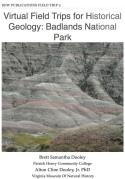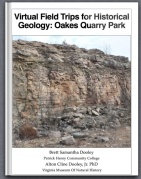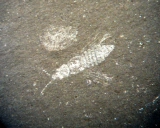This isn’t really the first day of the Geological Society of America meeting, but it’s the first day I’m participating after arriving in Minneapolis last night (and after spending several hours trying to park, after discovering that the parking garage is too short for my truck).
Most of the talks I’m attending are being held later in the week, but I did listen to several presentations today.
In a morning session on glaciers, Ívar Örn Benediktsson discussed the internal structure of terminal moraines of modern glaciers in Iceland. This was particularly interesting to Tim and me, as 2 days ago we were looking at part of the terminal moraine of the Pleistocene ice sheet in North America, which blocks off each end of Devil’s Lake in Wisconsin (above).
In the next talk, Anders Schomacker and others presented ongoing research on a drumlins field forming today under Múlajökull, a glacier in Iceland (image below from Google Earth). Drumlins are long hills of sediment that were formed in vast fields during the Pleistocene, but seem to be rare in modern glaciers. This research suggests that drumlins formation is associated with surges in the glacier, and perhaps with the location of crevasses.
I then left the glaciers to run upstairs to hear a talk by Jen Wenner, Helen Burn, and Eric Baer on a teaching program called “The Math You Need, When You Need It“. This is an online tutorial to help introductory students with math concepts they’ll need to be successful in their geology classes.
After lunch I picked up a couple of paleontology talks. Matthew Clapham and Jonathan Payne looked at the end-Permian extinction, the largest extinction in Earth’s history with the loss of 80% or more of all species. Their research suggests that the bulk of the extinctions occurred very rapidly, perhaps in less than 100,000 years. Organisms with carbonate shells were hit particularly hard, and combined with other isotopic data this suggests that increased levels of carbon dioxide from the Siberian Traps volcanic eruptions may have been the primary driver of this extinction.
Later in the same session, Joshua Miller and Volker Bahn looked at biogeographic patterns in large North American mammals at the end of the Pleistocene ( such as the mammoth below, displayed at the Nebraska State Museum). Although their data sets were very small and could have sampling biases, some of their conclusions were surprising. For example, they see a split in the ranges of mammoths and mastodonts after the glaciation, with mastodonts being largely isolated in the east.
More tomorrow.













Pretty please: go to the Triassic Kraken talk and tell us all about it! I’m not quite sure what to think about it from what I’ve seen of the abstract and the press release.